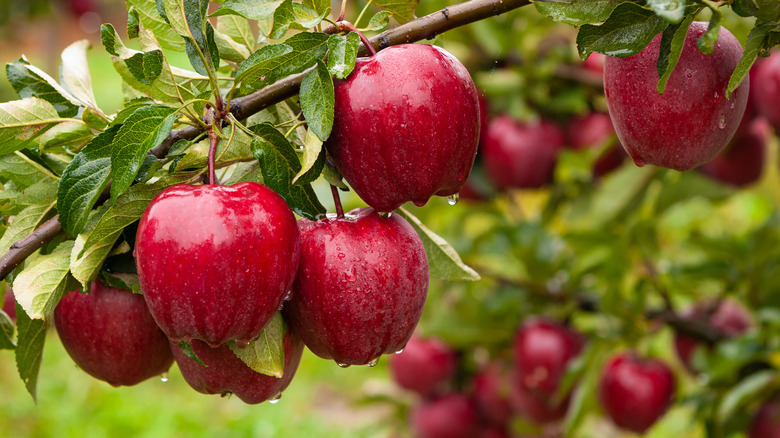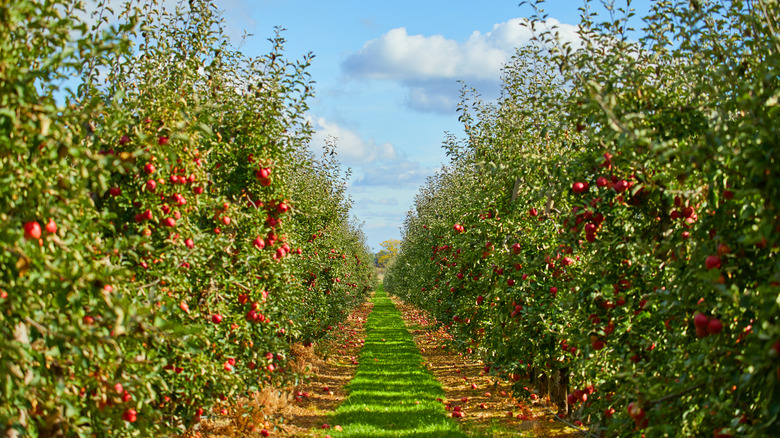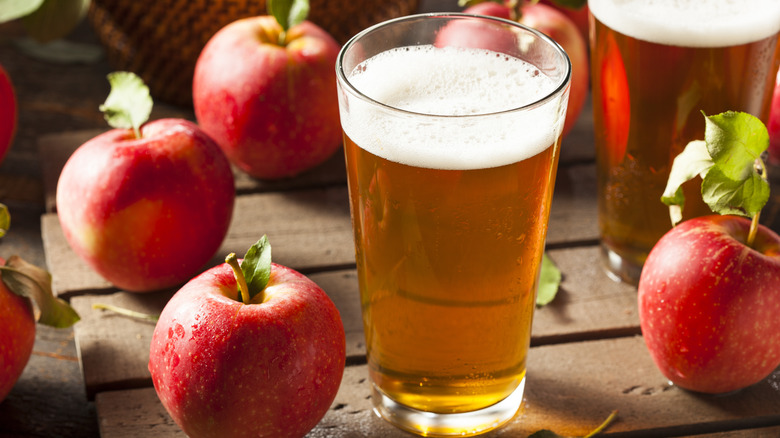The Religious Motivations Behind How Johnny Appleseed Grew His Apples
The two things most commonly associated with classic Americana are baseball and apple pie. Baseball has long been considered America's pastime, and it's an undeniable fact that countless Americans enjoy a nice slice of apple pie every now and then. À la mode, anyone?
History Channel tells us that baseball can be traced back to Revolutionary America. While that's undoubtedly an impressive and lengthy history, at around the same time, apples were sewn into America's fabric by the legendary Johnny Appleseed, per Smithsonian Magazine. (Though, to be fair, they weren't being bred for use in apple pies just yet.)
American history has made a mythical figure out of Johnny Appleseed. However, delving into the genuine tale of John Chapman's life on the American frontier paints a portrait of a simple, religious man whose spiritually motivated school of botanical science led to groves of apple trees that were only fit for fermenting.
Johnny Appleseed and Swedenborgianism
According to Smithsonian Magazine, John Chapman, the real-life man behind the folkloric figure, began planting apple trees as a business move. In the 1790s, the Ohio Company of Associates handed out 100-acre plots of land to anyone willing to relocate to the Ohioan wilderness. However, to establish residency at these homesteads, the prospective settlers needed to "... plant 50 apple trees and 20 peach trees in three years." Chapman realized he could plant these orchards before the frontiersman arrived and sell them.
However, the apples that Johnny Appleseed grew were not for eating. Even though, as North Carolina State University tells us, the science of grafting has been dated back thousands of years, Johnny Appleseed didn't use grafts when planting his apple trees. He was a devout member of a relatively obscure sect of Christianity known as Swedenborgianism, which Smithsonian Magazine explains stood in opposition to grafting, as it was akin to plant torture. He only ever used apple seeds, and as such, his apples could only be used for making cider.
The history of hard cider in America
There are many reasons why you might want to drink hard cider. However, it's easy to imagine that there were a whole host of additional reasons why you may have wanted to throw back a hard cider if you lived on the early-American frontier. Smithsonian Magazine, citing Howard Means' "Johnny Appleseed: The Man, the Myth, the American Story," explains that folks on the frontier drank ten ounces of hard cider daily. Water was often not potable on the homesteads, while apples were abundant.
Michael Pollan describes the modern legacy of Johnny Appleseed's prodigious planting in his book "The Botany of Desire" (via Smithsonian Magazine). Because of Chapman's religiously motivated decision to use seeds in his planting, the American apple became much more genetically diverse. Had he opted to graft his crop — therefore decreasing its range of genetic potential — it's possible that we wouldn't have certain apple varieties today, like the golden delicious.


